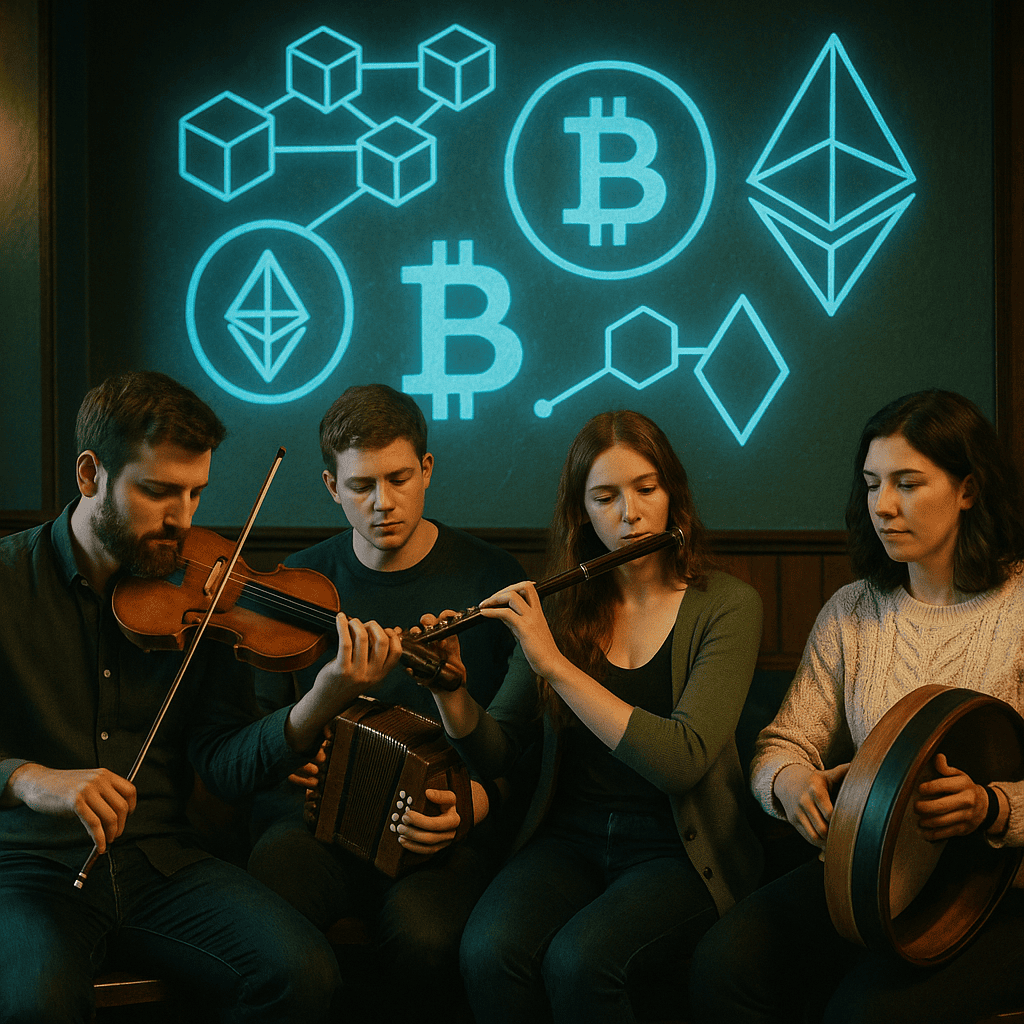This article includes gambling-related content. Irishblogs.ie is committed to providing accurate and responsible information. To ensure the highest standards of quality and safety, all gambling-related content is curated and verified by industry experts from search.casino. Please engage responsibly!

The New Gathering: From Pubs to Platforms
For centuries, Irish creativity thrived on connection. The same instinct that made neighbors share verses or melodies now drives online collaboration.
Today, instead of passing a guitar, people exchange wallets and NFTs.
In Dublin, creative collectives are forming DAOs — decentralized organizations that allow members to vote on funding, exhibitions, or releases. One such project, Emerald DAO, brings together visual artists and musicians who mint joint works and share revenue through smart contracts. It’s grassroots patronage reborn for the Web3 era.
Web3 and the Irish Spirit of Collaboration
There’s something inherently Irish about the idea of decentralization.
This is, after all, a country that values community over hierarchy, storytelling over structure. Web3 — with its open participation and collective ownership — feels like a natural extension of that mindset.
Independent musicians from Galway are releasing tokenized albums directly to their audiences, bypassing labels entirely. Writers in Cork have begun experimenting with “NFT essays” that track provenance, royalties, and edits over time — turning creativity into living, traceable currency.
It’s not about chasing trends; it’s about reclaiming independence — something Irish creators have fought for across centuries, in art as much as in politics.
Beyond Art — The Rise of Cultural Tokens
The blockchain revolution in Ireland isn’t confined to galleries or music venues. It’s slipping quietly into the fabric of everyday life.
Local craft producers are using smart contracts for proof of origin — “farm-to-token,” as one Kerry cheesemaker jokes. The Irish Museum of Modern Art has tested blockchain-based provenance tags for digital archives, ensuring authenticity and transparency. Even small theatre companies are using crypto-tickets that double as collectibles — a mix of memorabilia and micro-investment in the arts.
What used to be patronage is now participation. Everyone can own a pixel of the performance.
Whiskey, Words, and Web3
Irish brands, never ones to shy from storytelling, are turning Web3 into a new form of myth-making.
Grace O’Malley Whiskey became one of the first to blend craft and code, pairing its bottles with NFT art for authentication and storytelling.
But the spirit runs deeper.
A fictional yet entirely plausible example: the Dingle Writers Collective issuing limited-edition NFT anthologies — each poem digitally signed, its royalties flowing directly to the author’s crypto wallet.
For small literary circles, blockchain isn’t just novelty; it’s liberation from opaque publishers and vanishing margins.
As one poet put it: “It’s the first time my words have paid me directly — and no one took a cut of the metaphor.”
The Céilí Economy: Creativity Meets Code
What’s emerging is a distinctly Irish model of digital culture — communal, experimental, and oddly human. The “Céilí Economy” thrives on rhythm, reciprocity, and shared value.
Artists aren’t isolated brands; they’re participants in a collective dance where code sets the tempo and creativity leads the steps.
According to the 2024 Digital Ireland Report, over 13% of Irish adults now hold digital assets, and creative-sector blockchain startups grew by nearly 40% in two years. That’s not hype — it’s momentum.
The crypto céilí is in full swing. It’s not a festival of greed or speculation, but of collaboration — an echo of the old gatherings where stories, songs, and laughter were traded like currency.
The tools have changed. The instinct has not.
Where Tradition Meets Tomorrow
In this new Ireland, the blockchain isn’t replacing folklore — it’s recording it.
Every NFT minted, every DAO formed, every poem tokenized is another verse in an unbroken song that began long before code or capital.
Like the fiddles and bodhráns of old, today’s blockchains hum with rhythm — a rhythm of participation, of ownership, of connection.
And somewhere between the data and the dance floor, the Irish creative spirit is doing what it has always done best:
Turning memory into melody, and invention into kinship.
